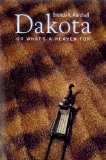|
|
Early into reading Anna Funder’s Stasiland: Stories from Behind the Berlin Wall, I came across a passage that made me think, “That is truly Kafkaesque.” For some reason, that sent my mind on a digression into the difference between something being Kafkaesque and something being Orwellian. While I eventually sorted it out in my own mind, it turns out that in the overall context of the book, it wasn’t a key issue. Put simply, Funder’s discussions with people who lived through the East German experience leave no doubt it was both.
 Kafkaesque? In East Germany (the German Democratic Republic or “GDR”), it was entirely legal to file an application to leave the country and live elsewhere. Of course, if you applied to leave you were suspected of wanting to leave. Wanting to leave was the criminal offense of “Attempting to Flee the Republic.” Thus, a legal act made you a criminal. Kafkaesque? In East Germany (the German Democratic Republic or “GDR”), it was entirely legal to file an application to leave the country and live elsewhere. Of course, if you applied to leave you were suspected of wanting to leave. Wanting to leave was the criminal offense of “Attempting to Flee the Republic.” Thus, a legal act made you a criminal.
Orwellian? The State Security Service (“Stasi”) had 97,000 employees in a country of 17 million. But the Stasi also had more than 173,000 informers. That meant there was one Stasi officer or informer for every 63 people. Some estimate that if all part-time informers were included, there was one informer for every 6.5 citizens. Or take the case of a highly popular East German rock band. When they sounded too political, the Stasi did not ban the band. Instead, they were told, “You no longer exist.” Not only were they not on the radio or covered in the press, the record company reprinted its catalog to omit the band.
Caught up in this perverse world were the East Germans themselves. And they are the real focus of Funder’s book, not only those who were spied upon but those who worked for Stasi. Funder, an Australian, displays her affection and admiration for the East Germans throughout her book. The book was sparked during her employment with a TV station in West Berlin after the fall of the Berlin Wall. She was puzzled why producers felt that the GDR was a subject best forgotten. She embarked on her own search to find out what it was like to live in what the German media called “the most perfected surveillance state of all time.”
Although written as a first person account of her exploration, Stasiland succeeds in allowing East Germans to tell their own story and bringing an entirely human face to both the spies and the spied upon. Stories of those affected by the Stasi’s pervasiveness, of course, abound but Funder does a fine job of finding stories among everyday people that go to the heart of life there. Surprisingly, when she placed a newspaper ad asking to speak with former Stasi officers and unofficial collaborators, she was flooded with responses. Why were there so many Stasi veterans? As a Stasi instructor told Funder, there was more and more work to do as time went on “because the definition of ‘enemy’ became wider and wider.” In fact, being investigated may have been enough alone to make you an enemy of the state.
The stories that arose in this type of atmosphere range from heartbreaking (parents separated from their ill child for years because of the Wall) to bizarre (the Stasi’s collection of “smell samples”). Like the reader, Funder is an outsider in this society, allowing readers to share her feelings and reactions as she learns of the big and small moments of life in the GDR. By recounting events and viewpoints from both sides, she also provides readers a more complete look at and better understanding of the GDR and its residents.
First published in English in 2003, Stasiland won the BBC Samuel Johnson Prize of Non-Fiction in 2004. Yet the stories and the people behind them seem timeless and the book remains as worthy a read today as it did then.
Relations between people were conditioned by the fact that one or the other of you could be one of them. Everyone suspected everyone else, and the mistrust this bred was the foundation of social existence.
Anna Funder, Stasiland: Stories from Behind the Berlin Wall
Interesting Reading in the Interweb Tubes
Bookish Linkage
Nonbookish Linkage
My books are forgeries. Nobody wrote them. The goddam typewriter wrote them; it’s a magic typewriter.
Philip K. Dick, The Exegesis of Philip K. Dick
I’ll be honest. Brenda K. Marshall started out with a couple strikes against her. First, she is from North Dakota. Second, she has since moved to one of those areas where people tend to call this “Dakota,” without regard for north or south, and may either shake their heads or seem astonished to meet someone from here. Fortunately, though, the love for the prairie and its people Marshall garnered during her years growing up on a farm in the Red River Valley is indelible. Her book, Dakota, Or What’s a Heaven For, leaves no doubt of that.
 Set in the period when Laura Ingalls Wilder was living in Dakota Territory. some might presume that its setting in the Red River Valley near Fargo, N.D., is what distinguishes it from Wilder’s Little House series. Granted, both portray the difficulties of trying to carve out a life on the prairie and recognize the role of women in that enterprise. Dakota has a grander vision, however, a much broader horizon than the family home and nearby town, which she brings through in a couple ways. Set in the period when Laura Ingalls Wilder was living in Dakota Territory. some might presume that its setting in the Red River Valley near Fargo, N.D., is what distinguishes it from Wilder’s Little House series. Granted, both portray the difficulties of trying to carve out a life on the prairie and recognize the role of women in that enterprise. Dakota has a grander vision, however, a much broader horizon than the family home and nearby town, which she brings through in a couple ways.
One is the breadth of characters. The main focus is the family of John Bingham, who, at the outset, is a wealthy investor in the Northern Pacific Railroad living in St. Paul, Minn. When the Northern Pacific goes bankrupt and sparks the Panic of 1873, Bingham is among the investors who seek to recoup losses in the stock by trading it for land the railroad held as part of its massive land grant and taking his family to what was known as a “bonanza” farm. Much of the story is told from the perspective of his daughter-in-law, Frances Boughton Bingham. At At the other end of the spectrum is the family of Torger Knudson, Norwegian immigrant homesteaders trying to eke out an existence in a sod house on the prairie. His daughter, Kirsten, will eventually become part of the housekeeping staff in the sumptuous Bingham home in the midst of the prairie. Parts of the story are also told from her perspective, although hers is in the first person in a dialect reflective of her heritage and, as the story proceeds, the growth in her development.
Just as the will of these two women come on display over the course of the book, there is another persistent indomitable force — the weather. Whether in the form of blizzards, the humidity of summer, the omnipresent wind, the flooding of the Red River or the profoundly beautiful changes it brings to the land over the seasons, the weather is a constant presence in the lives of these people. This is particularly so given the isolation and distance among the many families and individuals living outside established communities and the fact that not only their livelihood but their lives depended on the weather.
Finally, Marshall, who now teaches English at the University of Michigan, weaves the territorial politics of the time into the story. Various characters, including Frances’ husband, take the reader to the territorial capital in Yankton, in what is now southeastern South Dakota, nearly 300 miles from the Red River Valley. This gives us a glimpse of not only the debate over the capital’s location and dividing the territory into two states, but also the chicanery and graft underlying and influencing much of the political debate. By occasionally taking the story inside the powers and efforts trying to bring people to the prairie and the disadvantages to which individual families were subjected by those same promoters, Dakota is historical fiction that entertains and educates.
Although at an important storyline involving Frances is particularly modern, Dakota is presented in a style that echoes the motifs of late 19th Century American literature, even with its chapter headings. The story unfolds at a relatively leisurely pace. While some readers might find it too leisurely, the pace has the feel of the gradual change of seasons. Occasionally, the book’s breadth can be a weakness as, for example, some characters or episodes almost seem like vehicles intended to take the reader to particular places or to place the story in a context with historical events those unfamiliar with the Dakotas will know. Ultimately, though, the book is a meticulous tapestry intended to show how life was lived and how some prospered, some failed and “most just hung on.” It is an homage not only to the people but the land and the profound relationship between the two.
You have been told that there is nothing there. I tell you there is too much. Even were there is nothing, there is too much of it.
Brenda K. Marshall, Dakota, Or What’s a Heaven For.
Interesting Reading in the Interweb Tubes
Oddest Genre Blending Blog Question of the Week
Bookish Linkage
Nonbookish Linkage
You know I live for the day
When you say, “Baby, let’s just run away”
Everclear, “Learning How to Smile,”
Songs From An American Movie, Vol. One
“Idols are best when they’re made of stone,” Joan Baez wrote in a song about Bob Dylan, the songwriting voice of a generation. It could also apply to a man many viewed as being the literary hero of the counterculture. As Charles J. Shields shows in his outstanding biography of the author, Vonnegut was far from a flawless person or author. Yet his fallibilities helped create his literary legacy.
 And So It Goes: Kurt Vonnegut: A Life is an “authorized” biography of Vonnegut. In 2006, having just published Mockingbird: A Portrait of Harper Lee, Shields sought and eventually obtained Vonnegut’s agreement to work with him on a biography. Unfortunately, after just three meetings, Vonnegut fell and suffered irreversible brain injuries that led to his death in April 2007. After Vonnegut’s death, his literary executors told Shields they chose someone else to write the “authorized” biography. As a result, they denied Shields permission to quote from some of Vonnegut’s letters. (The new authorized biographer was told by the estate six months later he was no longer the authorized biographer) And So It Goes: Kurt Vonnegut: A Life is an “authorized” biography of Vonnegut. In 2006, having just published Mockingbird: A Portrait of Harper Lee, Shields sought and eventually obtained Vonnegut’s agreement to work with him on a biography. Unfortunately, after just three meetings, Vonnegut fell and suffered irreversible brain injuries that led to his death in April 2007. After Vonnegut’s death, his literary executors told Shields they chose someone else to write the “authorized” biography. As a result, they denied Shields permission to quote from some of Vonnegut’s letters. (The new authorized biographer was told by the estate six months later he was no longer the authorized biographer)
Yet And So It Goes (a title based on a repeated phrase in Vonnegut’s Slaughterhouse-Five) is about as thoroughly researched as they come. Not only did Shields interview 125 of Vonnegut’s contemporaries, friends and family members, he still had access to some 1,500 personal letters, nearly all of them never before seen. He never quotes at length from any of those letters but provides plenty of footnotes (many chapters have 150 or more) for those interested in the source material. More important, his background as a journalist gives the book a straightforward style that makes it a pleasure for the reader who isn’t worried about where each statement comes from.
One of the most appealing aspects of the book is its balance. Approaching it chronologically, Shields details aspects of the author’s life that Vonnegut and others felt affected him psychologically and emotionally, but doesn’t meander into the pop psychoanalysis seen in some biographies. The book does not hesitate to explore Vonnegut’s often unusual relationship with his first wife, Jane, his occasional (and at times long-term) dalliances, and his perhaps even more unusual relationship with his second wife, Jill Krementz, but, for the most part, Shields lets the participants or those with firsthand knowledge speak for themselves. (Krementz refused to be interviewed for the book.) He examines the source and meaning of material in Vonnegut’s works, but doesn’t go romping off in “lit crit” analysis. He talks about the discrepancies between the public persona and the private person, but lets the reader decide whether and how it affects their view of Vonnegut.
Readers of Vonnegut’s books often encountered parts of his life, whether as part of the story or in introductions to the work. This, of course, is most notable in Slaughterhouse-Five, based on Vonnegut’s own experience as a prisoner of war in Dresden, Germany, when it was firebombed. In explaining how Vonnegut wrote, and often struggled with, his novels, And So It Goes delves deeper into how those experiences affected him and, moreover, influenced his writing. And while Vonnegut went on to become, or at least be perceived as, a spokesman for the left, Shields shows that even that isn’t as clear as it seems. To some extent, Vonnegut created the style and cast the role for himself. That isn’t to say these weren’t honestly held beliefs; it’s simply that practice is often different than theory. While he was acclaimed by many protesting the Vietnam War and critical of the capitalist system, among the investments in that spokesman’s portfolio were a strip mining company and Dow Chemical, the manufacturer of the napalm used in Vietnam. If anything, the fact he wasn’t the same age as his fans may have been to his benefit. “He was the establishment,” writes Shields, “which added gravitas to his indictments of ‘the system.'”
Shields concludes, and most readers will likely agree, that Vonnegut was “a reluctant adult,” more a man of contradictions and multiple identities than a paragon of literary or other virtue.
He was a counterculture hero, a guru, and a leftist to his fans; a wealthy investor to his broker; a champion of family and community, and yet a distant father; … a satirist of American life, but feeding at the trough of celebrity of to his ears.
So what can we conclude from Shields’ thoughtful exploration of Vonnegut, his struggles and his successes? From the standpoint of this longtime Vonnegut fan, we should be damn glad Vonnegut was the way he is portrayed in the book. Otherwise, his mark on our literary landscape and culture may not have been as profound.
So it goes.
…journalism had acted like a grindstone on his prose, shearing off pretension until plain English was left.
Charles J. Shields, And So It Goes: Kurt Vonnegut: A Life
|
Disclaimer 
Additionally, some links on this blog go to Amazon.com. As an Amazon Associate I earn from qualifying purchases. There is no additional cost to you. Contact me You can e-mail me at prairieprogressive at gmaildotcom.
|
 Kafkaesque? In East Germany (the German Democratic Republic or “GDR”), it was entirely legal to file an application to leave the country and live elsewhere. Of course, if you applied to leave you were suspected of wanting to leave. Wanting to leave was the criminal offense of “Attempting to Flee the Republic.” Thus, a legal act made you a criminal.
Kafkaesque? In East Germany (the German Democratic Republic or “GDR”), it was entirely legal to file an application to leave the country and live elsewhere. Of course, if you applied to leave you were suspected of wanting to leave. Wanting to leave was the criminal offense of “Attempting to Flee the Republic.” Thus, a legal act made you a criminal.








